Many writers have their own habits and rituals that they follow when they sit down to pen a narrative. Much like running your own business from home, a writer needs a space that they can dedicate to the act of writing, so as to separate themselves from their home lives. These famous writers took that a step further, and dedicated a whole wonderful shed to their craft!
Dylan Thomas
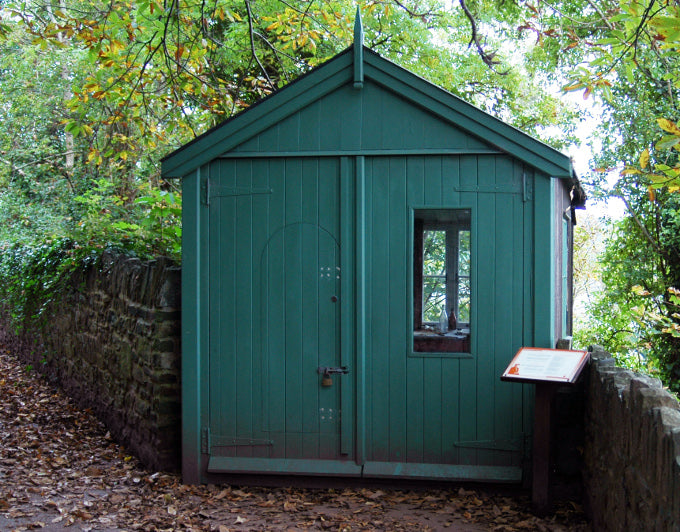
Image source: Wikipedia.
Through his short life, Dylan Thomas penned some of the most famous poems in history. Some of these he wrote in his very own writing shed in Laugharne, Carmarthenshire. Thomas moved to Laugharne with his young family in 1938, but it wasn’t until 1949 that he moved into the Boathouse when actress Margaret Taylor bought the lease.
Thomas’ writing shed was originally a dilapidated garage balanced on stilts, overlooking the Taf estuary. He penned some of his most famous poems here, such as ‘Do Not Go Gentle Into That Good Night’, and ‘Over Sir John’s Hill’. Thomas’ writing retreat, his “word splashed hut”, was filled with pictures of Byron, Walt Whitman, Louis MacNeice, and WH Auden; he also kept a list of alliterative words on his desk.

Image source: Wikipedia.
The writing shed can still be visited in Laugharne, and has been filled with all the things Thomas had in it when he was alive. Visitors can have a peek through the door’s window to see how it would have looked while Thomas was hard at work!
J K Rowling
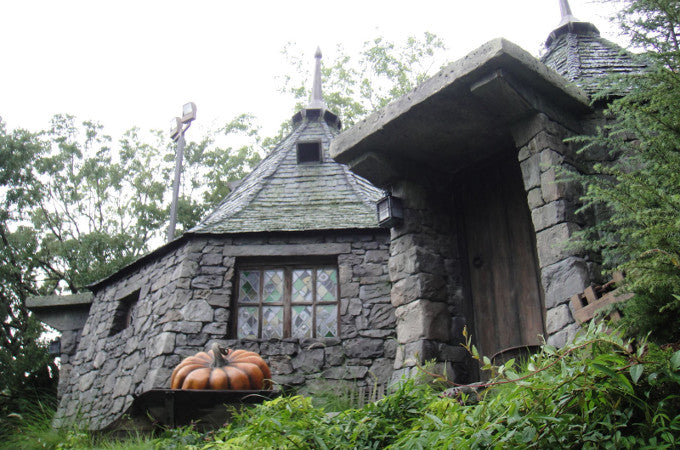
Image source: Thinkstock.
The ‘Harry Potter’ novels rocketed JK Rowling to fame in the early 90’s, making her a household name. Rowling famously penned the boy wizard’s story in cafes around Edinburgh, but back in 2011 applied for planning permission to build a summerhouse. The writing den is rumoured to look very similar to her character Hagrid’s hut, and is based at the edge of her Scottish estate.
Rowling says that she loved the anonymity of writing in cafes, but that once you’re being watched you become too self-conscious to work. Her new writing space has got all the essentials, such as a kettle for a cuppa, that she needs to get stuck in with her stories!
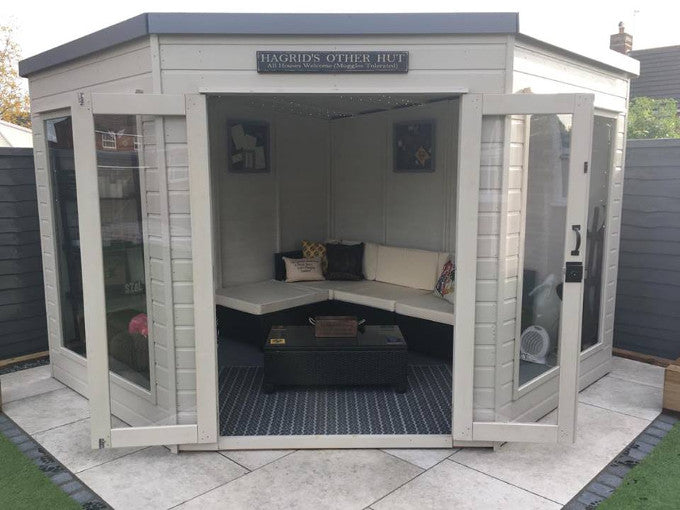
Roald Dahl
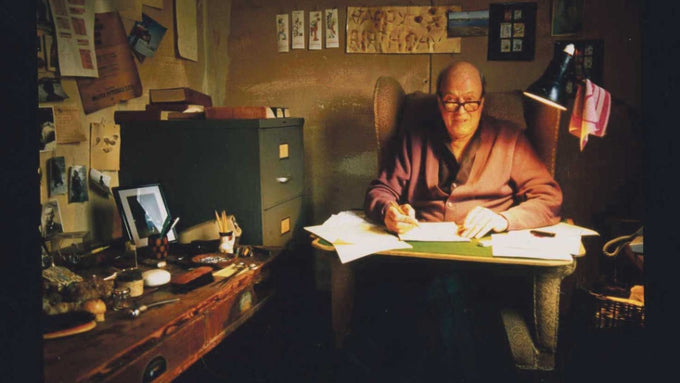
Image source: roalddahl.com.
Roald Dahl is beloved across the world for his wonderfully imaginative children's stories, from ‘Matilda’ to ‘Charlie and the Chocolate Factory’. But did you know that he used to write in his very own writing shed?
The Gipsy hut was inspired by Dylan Thomas’ writing shed in Laugharne, as Dahl wanted a peaceful space away from domestic life so as to focus on his writing without any distractions. It was built by Wally Saunders, a local builder and friend to Dahl, who is thought to have been the inspiration for the BFG character.
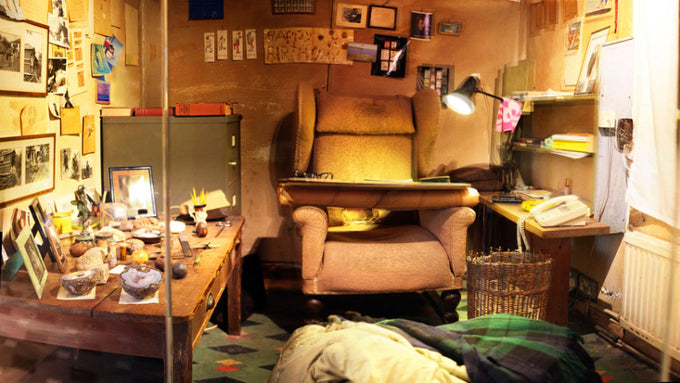
Image source: roalddahl.com.
In contrast to Thomas, who liked to work using the natural light from the window, Dahl would shut the curtains to work by artificial light. His desk was used to house a variety of items that were precious to him, including his own hip bone that had been removed in an operation, photos of friends and family, and gifts from fans across the world.
Dahl preferred to write in an armchair, with a homemade desk, and would write everything out in pencil on a yellow legal pad imported from America. Dahl adapted his armchair to relieve pressure from his spine which he damaged in the war, so as to make him more comfortable when working.
In 2011, his family raised £500,000 so they could move the interior of his beloved Gipsy hut to a local museum in Great Missenden, where it is maintained in the exact state that he left it in.
Cressida Cowell
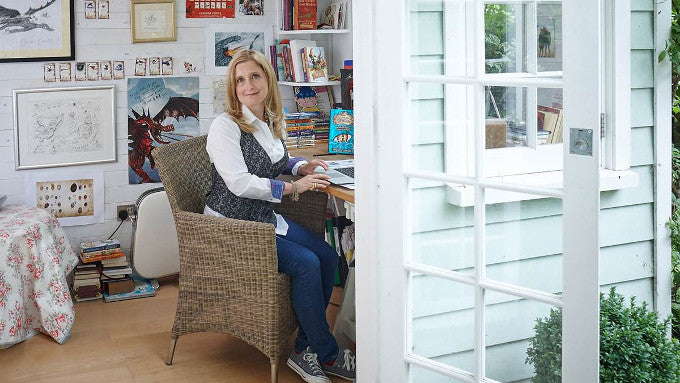
Image source: BookTrust.
Cressida Cowell’s ‘How To Train Your Dragon’ series has been adapted for screen in recent years, bringing the stories of Horrendous Hiccup III and his dragon Toothless to many. Cowell penned all 12 of her ‘How To Train Your Dragon’ novels in her very own writing shed at the bottom of her garden.
Cowell’s writing shed is cut off from the outside world - there’s no internet or telephone connection to distract her from her work. She feels that in order to concentrate on the fictional world in her head, she needs to look inwards rather than what’s going on outside her shed.
The walls are covered with some of her fantastic illustrations, including her map of her fictional island Berk, and her desk is covered in photos and other things that inspire her. Cowell also has a bed in her shed, as she finds it can be a really creative space when she’s finding a particular part of her plot tricky.
Philip Pullman
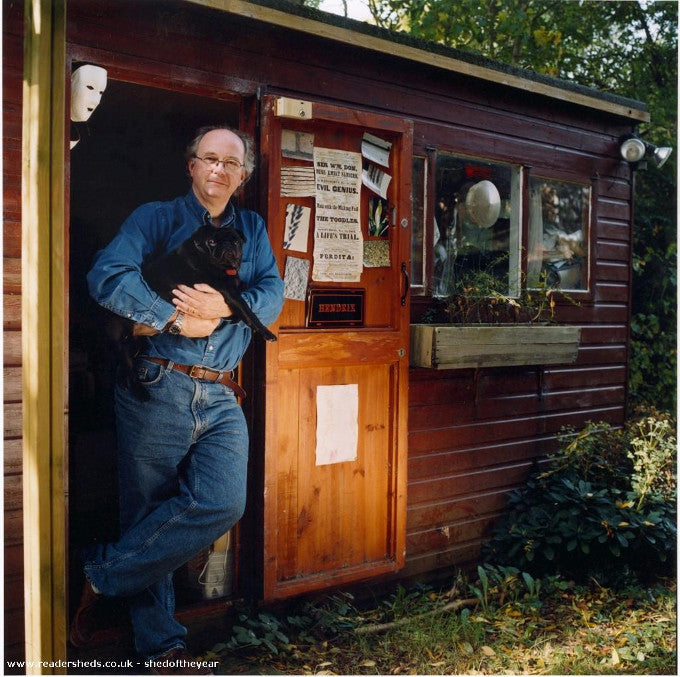
Image source: ReaderSheds.co.uk.
Philip Pullman wrote the well-known ‘His Dark Materials’ series in his writing shed, which has been proclaimed one of the best fantasy series of all time. Pullman liked the space away from the house, where he would sit and write three pages a day (roughly 1,000 words).
His shed has now been passed on to artist Ted Dewan, and was featured as part of the Shed of the Year 2017 competition in the workshop and studio category. The shed comes with one strict rule - that once you are finished with it, it must be freely passed on to the next ‘steward of creative endeavours’.

Image source: ReaderSheds.co.uk.
Do you know of any other famous authors who use a shed to do their writing? We’d love to hear about it on our Facebook page!
Lead image: Unsplash



Share:
10 famous companies that started in a shed
Happiness is a shed of your own